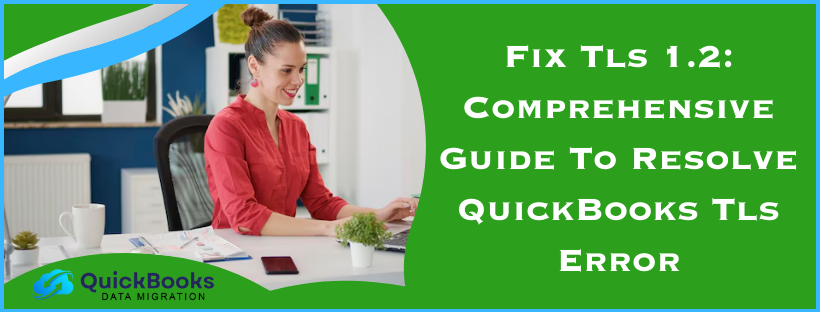TLS (Transport Layer Security) 1.2 is a security protocol used in QuickBooks to establish secure connections between the software and financial institutions, such as banks and credit card companies. TLS is essential for QuickBooks to connect to banking institutions securely. This ensures that sensitive data, such as transactions, is encrypted and shielded from unwanted access. A QuickBooks TLS error occurs if your system needs do not meet specific criteria and are not aligned with .NET requirements. It impacts several QB features, including support sites, Intuit Data Protect (IDP), password reset tools, payroll, payments, Internet banking, and QuickBooks activation on a new PC
How to Prevent QuickBooks TLS 1.2 Failure
To guarantee compliance, your system needs to meet specific criteria for Windows, Internet Explorer, the Operating System, and TLS 1.2. If compliant, you must align it with .NET requirements using the TLS 1.2 Readiness tool.
Operative Systems
- Windows 10
- Windows Server 2008 R2
- Windows Server 2012 R2
- Windows Server 2017
Necessary: If you’re still using Windows 7 or Windows 8.1, take note of the following information.
Web Explorer
QuickBooks Desktop utilizes Internet Explorer functionalities. To receive the most recent updates from Microsoft,
- Install Internet Explorer 11.
- Shut down QuickBooks Desktop.
- Upgrade to Internet Explorer 11.
- Open QuickBooks Desktop again.
The .NET Framework
Version 4.5.2 or higher of the .NET framework is required for QuickBooks.
This is how you may update it.
- Get the Microsoft.NET Framework by visiting their website.
- Put the file on your desktop for later.
- Double-click the file, then adhere to the prompts displayed on the screen.
- After the installation, restart your computer.
Note: Get in touch with Microsoft or an IT specialist if you encounter any problems installing the .NET Framework.
Increased privileges
You must run QuickBooks with elevated rights to ensure proper Internet security if you notice an error message such as “Your QuickBooks does not have enough privileges to enable TLS 1.2. You must run QuickBooks in elevated mode to allow using TLS 1.2.”
You can proceed by following these steps:-
- Exit QuickBooks
- Right-click the QuickBooks icon
- Select Run as Administrator
Solutions for TLS 1.2 Warning in QuickBooks
TLS 1.2 failures in QuickBooks must be fixed to regain secure connections with financial institutions. This section offers detailed instructions on troubleshooting and fixing TLS 1.2 problems to ensure financial processes continue without interruption.
Solution 1: Enable TLS 1.2
Encountering TLS 1.2 warning message in QuickBooks as “require TLS 1.2”? Let’s take the following actions to rectify it:
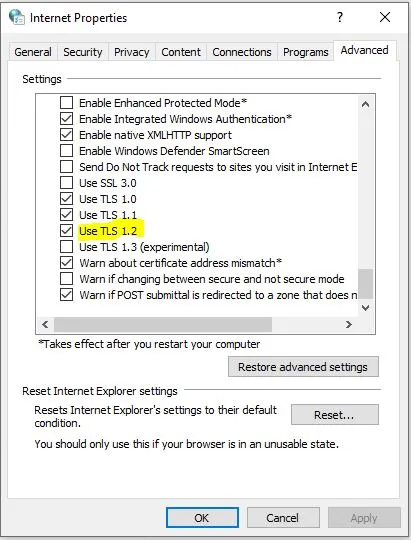
- Launch IE 11.0.21 (KB4074736).
- Select Internet Options under Settings.
- Select Security after clicking Advanced.
- Check TLS 1.2, and uncheck TLS 1.0, 1.1.
Solution 2: Repair QuickBooks
If you continue to face the error even after enabling TLS 1.2, let’s perform a QuickBooks repair. It replaces all corrupted program installation files and generally fixes corruption problems, such as the inability to open a file or making it difficult to carry out daily chores.
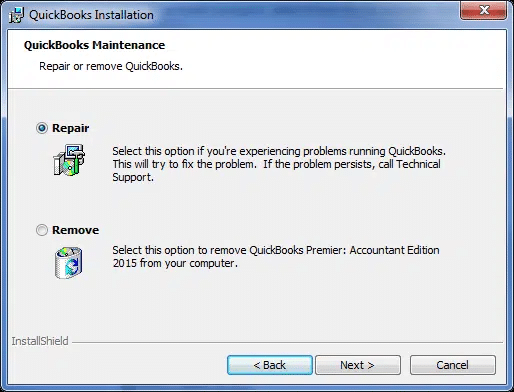
The following procedures can be used to fix QuickBooks:
- Select the Windows Start menu from the menu on your machine.
- Enter Control Panel into the search field.
- Select Programs and Features or Uninstall a Program from the Control Panel page.
- Choose QuickBooks Desktop and Uninstall/Change.
- Select the Repair option located in the QuickBooks Installation window.
- Click Next.
- Click Repair or Proceed.
- Hit Finish to close the installer.
Solution 3: Use the QuickBooks Tool Hub’s TLS 1.2 Readiness Tool
When you implement this utility, you will update your operating system to be TLS 1.2 compliant.
Step 1: Download and Install the QuickBooks Tool Hub
The QuickBooks Tool Hub can fix common errors. Shut down QuickBooks. Close QuickBooks in order to use the tool hub. For best results, we recommend using Tool Hub on Windows 10 64-bit.
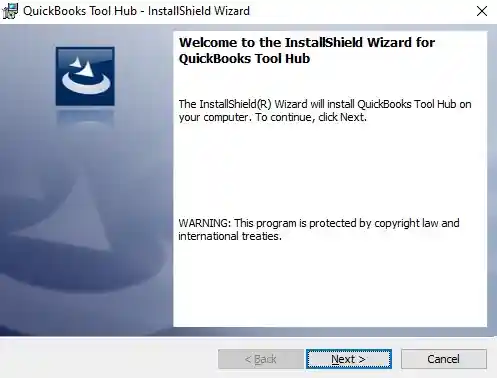
- Download the QuickBooks Tool Hub’s most recent version, 1.6.0.5.
- Save the file to a place you can easily find it, like the Downloads folder or your Windows desktop.
Note: If you have already installed Tool Hub, you may find your version by clicking the Home tab. You can see the version at the bottom. - Open the QuickBooksToolHub.exe file that you downloaded.
- Install and accept the terms and conditions.
- To access the tool hub on your Windows desktop after installation, double-click the icon.
Note: If you can’t find the icon, look up QuickBooks Tool Hub on Windows and select the program.
Step 2: Launch the TLS 1.2 tool from the Tool Hub
- Choose Installation Issues from the QuickBooks Tool Hub.
- From the lower right corner, choose QuickBooks TLS 1.2 Tool.
- To access the TLS Tool, select OK. To accept the EULA Agreement, select Yes.
- Choose Run.
- After the tool finishes running, click Exit.
Potential Causes for QuickBooks TLS 1.2 Failure
TLS 1.2 issues in QuickBooks are frequently caused by out-of-date software or faulty configurations. Problems can also arise from incorrectly set up antivirus software or firewall settings. TLS 1.2 issues might occur if security updates are not installed or updated in QuickBooks. These mistakes may interrupt connections to credit cards, banks, and other financial organizations. The specific reasons that lead to error TLS 1.2 in QB are:-
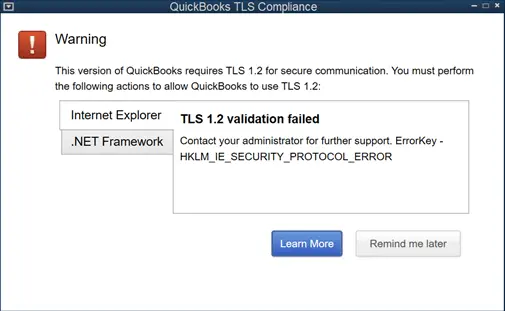
- It may be essential to update the version of QuickBooks you are using. For this reason, you should verify the version of your QuickBooks Desktop program.
- There could be a problem with your system’s compatibility with the most recent version of Internet Explorer.
- Restricted administrative access to the system hosting QuickBooks is likely another cause of the QuickBooks TLS problem.
- QuickBooks TLS problems may also be caused by Internet Explorer’s TLS 1.2 being disabled.
- QuickBooks Desktop TLS error can be caused by a .NET framework that is less than 4.5.2
Final Words
In conclusion, QuickBooks TLS error and other TLS 1.2 issues can be tricky, but they can be fixed by figuring out the underlying causes and taking appropriate action. Users may guarantee secure connections and avoid future problems by keeping up with software updates, accurately configuring settings, and maintaining appropriate firewall and antivirus settings. Proactive action can reduce delays and save time for financial operations. Using this knowledge, you can continue to enjoy a secure and seamless accounting experience.
Frequently Asked Questions on TLS 1.2
Will I lose data if I encounter QuickBooks Error TLS 1.2?
No, Error TLS 1.2 doesn’t affect existing data. However, resolve the issue promptly to maintain secure connections and prevent potential disruptions.
Can I still use online banking with QuickBooks Error TLS 1.2?
No, Error TLS 1.2 prevents secure connections, making online banking and payments unavailable. Resolve the error to restore online banking functionality.
Does QuickBooks Error TLS 1.2 affect all users?
Yes, Error TLS 1.2 can impact all QuickBooks users, especially those using online banking, payments, or payroll features. Ensure all users update QuickBooks and configure settings correctly.
How often should I update QuickBooks to avoid Error TLS 1.2?
Regularly update QuickBooks to ensure you have the latest security patches and TLS settings. Set QuickBooks to automatically update or check for updates every 30-60 days.
You May Also Read-
QuickBooks Error 1402: Could Not Open Key- Fixed
How to Set Up Firewall and Antivirus Settings for QuickBooks: A Complete Guide
Get Rid of QuickBooks Error: The File You Specified Cannot Be Opened
QuickBooks Error 40001- The Right Way to Fix it
Fix QuickBooks Error 6177 0 Using Proven Solutions

James Richard is a skilled technical writer with 16 years of experience at QDM. His expertise covers data migration, conversion, and desktop errors for QuickBooks. He excels at explaining complex technical topics clearly and simply for readers. Through engaging, informative blog posts, James makes even the most challenging QuickBooks issues feel manageable. With his passion for writing and deep knowledge, he is a trusted resource for anyone seeking clarity on accounting software problems.
